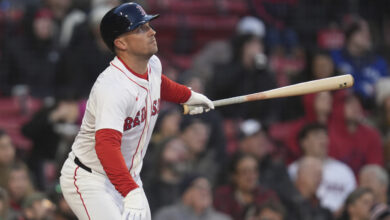
MLB Experimenting with Minor Leaguers’ Balls to Find Best Sticky Substance
Yes, I Know How That Sounds
Much has been made of Major League Baseball’s experiments with the baseballs themselves, whether they’re being juiced or deadened, having seems lowered or raised, or regulating substances pitchers can or can’t use with them. But as Evan Drellich reported for The Athletic (this is an incredibly detailed report that is worth your time), MLB is also using two Double-A leagues as proving grounds for new sticky substances meant to improve grip on the ball without jacking spin rates through the roof.
That means pitchers in the Texas and Southern League — the latter of which is home to the Tennessee Smokies — have been using major league balls all season. While that might not seem too significant in and of itself, consider that pitchers who are promoted from Single-A now have to adjust to a new type of ball. Not on that, but MLB has been changing the substances that are being put on the ball before games.
MLB has partnered with two different manufacturers, Dow and Chalkless, to produce “gripping agents” that will be applied to baseballs to improve tack or at least reduce slickness. One of those substances was being used for the first eight weeks of the season, after which the plan was to use a more traditional mud rub for another eight weeks, then finish with the other substance for the duration of the season.

As CI has learned, however, the feedback on the current balls was apparently so overwhelmingly negative that MLB has scrapped the remaining six weeks of the sample. It is not yet clear whether the plan is to revert back to the initial substance or finish out the season with the second option, which may be the same tacky stuff that was being used during the Arizona Fall League.
Some of that lack of clarity comes from MLB intentionally suppressing information for fear of messing with its results, though a lot of it is probably PR as well. Given how poorly their changes to the composition of the ball at the MLB level have been, news of additional experimentation might not be received warmly. There’s also the matter of using minor leaguers as guinea pigs, which the league can do because those players aren’t MLBPA members.

The really difficult aspect of all this from a player development perspective is that these changes make evaluation more difficult. It would be one thing if the balls were universal and all players could at least adjust to them, even if the substance of choice was not their preference. But since the balls are changing every few weeks, it’s tricky to judge results and identify possible fixes.
Drellich quotes several players who are frustrated by not just the baseballs themselves, but the manner in which these experiments are being conducted. Between a lack of access to the balls ahead of time, the pitch clock eliminating the ability to rub the balls up properly, or uncertainty with how the various substances would react to environmental changes, players are in the dark.
One pitcher who spoke to CI about the situation offered a borderline conspiratorial thought that MLB might be trying to show that the old balls from last year are actually the best option. And while others believe the league really is trying to do the right thing in finding a middle ground for what should eventually be a universally acceptable ball that isn’t slicker than snot on a doorknob, there’s still a sense that those running the experiments don’t necessarily know what they’re doing.
I just hope they get this all figured out soon and then opt to use the same baseballs at every single level of the pros. Outside of the logo, it makes no sense to change the balls between levels and/or leagues. Do they ask hitters to use different types of bats as they move up? Of course not.
All I know is that no matter what happens with the ball and how many hands umpires caress, pitchers are still going to find ways to add their own brand of tack.

